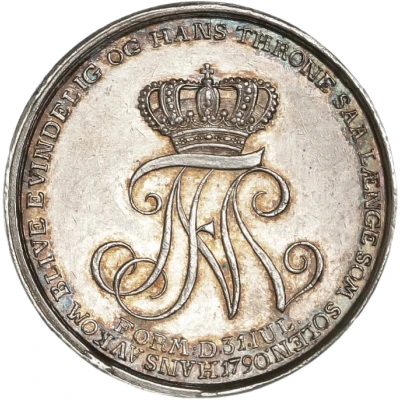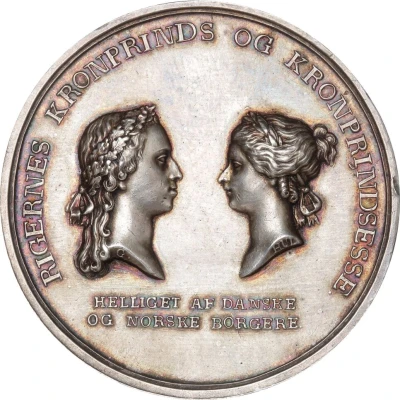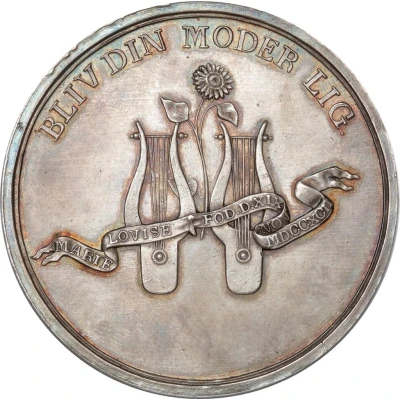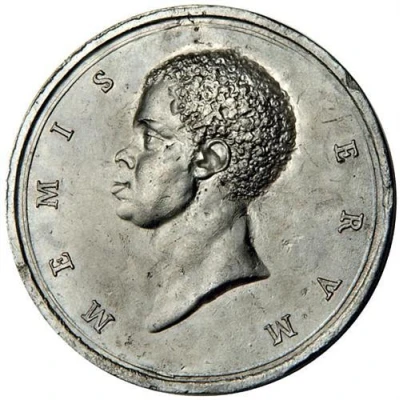
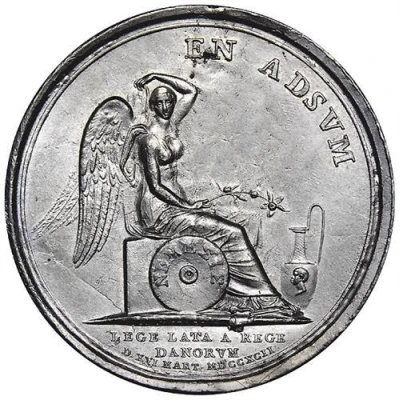

© Stacks Bowers
Medal - Abolition of the Slave Trade
1792 year| (white metal) | 88 g | 55.5 mm |
| Location | Denmark |
|---|---|
| King | Christian VII (1766-1808) |
| Type | Medals › Commemorative medals |
| Year | 1792 |
| Composition | (white metal) |
| Weight | 88 g |
| Diameter | 55.5 mm |
| Shape | Round |
| Technique | Milled |
| Demonetized | Yes |
| Updated | 2024-11-12 |
| Numista | N#148541 |
|---|---|
| Rarity index | 100% |
Reverse
Winged Nemesis, the avenging goddess of divine indignation and retribution, seated facing on a block dais, holding an apple branch in one hand and touching the fold of her wing in the other. Her seat is adorned with a wheel inscribed: NEMEΣIΣ.
Script: Latin
Lettering:
EN ADSVM,
NEMEΣIΣ
LEGE LATA A REGE
DANORVM
D.XVI MART MDCCXCII
Engraver: Pietro Leonardo Gianelli
Comment
Extremely Rare and Historically Significant, one of the most important Medallic items related to the Slavery Question and Black History in the New World, and one of Denmark's most famous Medals. (The level of interest and importance this medal holds in Denmark is illustrated by the Royal Danish Museum's Collection of Coins and Medals Homepage - which features four pieces: the oldest Danish coin, the magnificent Gold 1677 Victory over Sweden naval medal, the largest value Danish banknote and this Medal.) After only a handful of these privately minted medals were struck, the dies were destroyed. Today, just 5 pieces are known to exist, and of these one is in the Odense Museum and the other in the Danish Royal Museum. Hence this piece is only one of three in private hands.On March 16, 1792, the Danish Crown Prince Frederik VI issued the Edict of the Abolition of the Slave Trade. As regent for his father, the mentally unbalanced Christian VII, Frederik VI was author of widespread liberal reforms and this enactment was certainly one of his most important. Full prohibition of the slave trade in all Danish possessions did not take effect until 1802. Slavery itself, meanwhile, persisted in the Danish West Indies -- where it was tragically embedded into the economic life's blood of the colony -- for nearly half a century more. In 1848, Governor-General Peter von Scholten, who presided over the islands as an enlightened patriarch trying to alleviate the burdens of slaves and smooth over racial tensions, was faced with a slave rebellion on St. Croix. He responded by emancipating all slaves and ending slavery in the colony. "Both the motif and the revolutionary undertone" of this medal, as noted in the Royal Museum's Homepage, "are extremely rare in Danish medal art of the period." In his work "Danske Medailler og Jetons" (Copenhagen, 1893), Vilhelm Bergsøe opines that the medal's miniscule mintage likely stemmed from it being an unpopular topic of the day. The King, the Queen, the royal family, famous Danes, battles, horses any of these could be a suitable topic for a medallic depiction, but a Negro. Even self-proclaimed liberals were aghast. Looking back from our time, it is easy to be morally offended by this social reaction, but it was then the social norm.
Price
| Date | Mintage | VG | F | VF | XF | AU | UNC |
|---|---|---|---|---|---|---|---|
| 1792 | 5 | - | - | - | - | - | - |
Values in the table are based on evaluations by sales realized on Internet platforms. They serve as an indication only for Medal - Abolition of the Slave Trade 1792 item.
